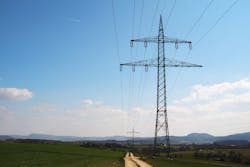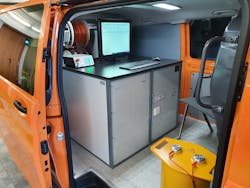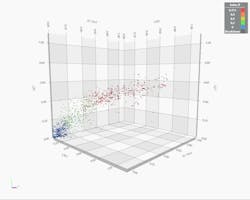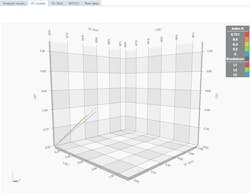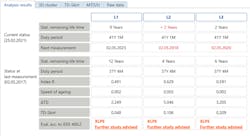The city of Magdeburg in Eastern Germany has a geographical area of around 200 sq km (80 sq miles). The distribution network operator, Netze Magdeburg GmbH (NMD) manages the municipal network of 140 km (87 miles) of 110-kV underground cables, 1100 km (684 miles) of 10-kV underground cables and 2500 km (1554 miles) of 0.4-kV underground cables that supply electricity to the city’s 240,000 residents.
As with other network operators, NMD strives to keep network assets in good condition while keeping costs low. To accomplish this, the utility — which has a predominantly medium- and low-voltage underground cable network — has increased investment in routine diagnostic testing of its medium-voltage (MV) underground cable network. In response to decreasing state-regulated revenue, NMD decided to make this investment so it could improve the overall reliability of its underground cable network.
Diagnostics Bring Transparency
For a few decades, NMD has used a range of measures to assess the condition of its cables. The underground MV cables subject to these tests include several different cable designs, ranging from mass-impregnated paper-insulated cables, cross-linked polyethylene (XLPE) cables and PE-insulated cables. The plastic insulation used in manufacturing the PE cables is considered substandard, as the material was produced in the former German Democratic Republic (GDR).
As a result of network expansion, many of the existing cable routes include cables with these different insulation materials. Therefore, N.MD uses three methods for evaluating the condition of its cables:
1. Partial discharge measurement to detect any damage to the insulation
2. Impedance measurement of each MV cable circuit
3. Dissipation factor measurement (tan δ) to assess the aging of the cable insulation.
The tan measurement provides the best basis of the three methods to determine the overall aging condition and, therefore, the probable remaining lifetime of the cable. At N.MD, the tan measurement takes the form of a very low frequency (VLF) measurement with a 0.1-Hz sine wave. The on-site measuring equipment is housed in a cable test vehicle, which is standard practice in Germany. Used for numerous other cable tests, such as fault location, these vehicles are fully equipped with test equipment produced by BAUR GmbH.
Tan measurements are performed multiple times and at various voltage steps between 0.5 x U0 and 2 x U0 — the root-mean-square value of the voltage between the phase conductor and earth, which is 11.6 kV for the 20-kV cables. This provides a series of results that enable conclusions to be drawn regarding the aging condition of a cable.
Harnessing More Benefits
In the case of XLPE cables, the tan δ measurement is usually slightly high when commissioned, because of additives that degrade the plastic cable insulation over time. It is only then the tan δ measurements can assess the condition of the insulation and, for example, presence and effects of water trees, or excess moisture in the plastic.
NMD uses the tan δ measurement on MV cable routes whose failure would result in an overload or fault in the network, or on MV cables subject to excessive load current during peak load periods. Up until recently, the most critical cable circuits in the distribution network, representing some 30% of the total length of MV network, were subject to tan δ measurements every four years. Another 30% of the less critical but still important circuits were subject to measurements every eight years. The remaining 40% were not being tested.
NMD aimed to increase the benefits of diagnostic measurements by improving network maintenance, optimizing cable replacement investments and reducing the cost of cable fault repairs. Collectively, accomplishing this objective would improve NMD’s network availability and reliability at minimum cost. Therefore, the utility extended the use of diagnostics to additional cable routes. The approach it had been taking to limit measurements to critical cables proved ineffective because failures still occurred on cables not included in the diagnostic measurement program.
Condition Evaluation Software
NMD implemented a database to store the measured values. However, because tan δ measurements alone do not provide any firm conclusions in terms of estimating remaining service life, the utility also rolled out BAUR statex software to maximize the benefits of the diagnostic measurement database and evaluate a cable’s condition. The statex software features procedures developed by South Korean grid operator KEPCO, which has used the software successfully for many years.
For cable condition evaluation, the solution requires tan δ measurements in accordance with BAUR’s VLF sine wave method, which uses statistical methods to analyze data. The software not only uses a utility's own measured values, but it also draws on more than 100,000 stored series of measurements. Additionally, the calculations can predict the following:
Remaining service life of a cable
Estimated speed of cable aging (aging index)
Recommendations based on these two predictions, for example, the frequency of tan δ measurements.
In addition, the software can be used to document the condition of the cable population, enabling evaluation based on various criteria. Therefore, network-critical cable routes can be selected easily. As a result, the information can be used by a utility’s technical departments, such as network maintenance and network planning, as well as its decision makers.
Deferred Replacement
The most significant advantage of statex is the ability to calculate an aging index and predict the remaining service life of cables. Based on this information, cable routes often can be used for several more years than would be expected otherwise, for example, if the tan measurements were assessed according to IEEE Standard 400.2-2004. Based on these measurements, the IEEE standard classifies a cable as good, further study advised or action required. The statex software estimates a cable’s remaining life, so for cables nearing the end of their service life, for example, the user is given two years or five years remaining life instead of a generic action required classification.
This different presentation of the tan measurements results in significant savings compared to both a purely time-driven investment strategy for the replacement of cables based on designed cable age and the scheduled replacement according to IEEE standard classification.
To determine the remaining lifetime, the degradation starting point (DSP) and critical point (CP) are first defined in statex. Measurable aging of plastic-insulated cables usually occurs after a few years. Typical values are around 10 years when the additives in the plastic have completely outgassed. From the DSP onward, tan measurement can be used to determine the aging condition of the route. The CP is defined by the utility. It typically is below the economic operating limit of the cable to provide a safety margin and avoid unplanned failures, as even with a relatively accurate prediction of the remaining lifetime, cable routes may still fail prematurely.
The statex software determines the remaining lifetime using a rate of aging based on the absolute value of tan , deviation of tan , and — a feature unique to the software — tan skirt, which represents a value for the time stability of the dissipation factor. The evaluation of tan skirt is why the predicted remaining lifetime is so accurate. If there is just one tan measurement for a cable route, the rate of aging and remaining lifetime is determined based on the dissipation factor for a young cable and the available measured values for an aged cable. When it comes to repeat measurements, the two most recent measurements are used to determine the progress of aging and remaining lifetime.
Remaining Lifetime Calculation
The recommended time interval between when a repeat measurement should be performed depends on the rate of aging and calculated time until the CP is reached. For rapidly aging or already heavily aged cables, a shorter time is suggested for repeat measurements compared to cables whose aging process is more gradual. These recommendations for repeat measurements have made it possible to move away from the rigid time intervals previously used by N.MD — four years for the most critical cable routes and eight years for other important cable routes — and, ideally, increase the intervals between measurements.
NMD began using the statex software at the beginning of 2020 to determine the measurement testing frequencies and economic benefits associated with using this software. It started by importing and evaluating the values from 500 existing tan measurements that had been performed on its XLPE, PE and mixed cable routes.
NMD compared its in-house measurements with the results available from statex. The comparison of results confirmed a good correlation. Additionally, the results showed that aging is calculated with a higher degree of sensitivity.
With statex, NMD can calculate recommendations for subsequent tan measurements along with a cable’s remaining lifetime. The average interval until the next measurement proposed for the 500-measurement series used in the test run was 6.4 years instead of every six years based on the fixed intervals NMD previously used. The statistical remaining lifetime of NMD’s measured cable routes is 16.2 years.
The longer period until a repeat measurement is required has resulted in NMD being able to subject around 7% more cable routes to tan measurement annually. In addition, it is no longer necessary to measure cables that have not yet reached the DSP. This frees up additional capacity for measurements on other MV cables, allowing testing to be performed on 17% more cables per year.
Alternatively, the aging condition will be transparent for 17% more cables, enabling replacement or repair work to be scheduled more efficiently, thus generating cost benefits. In addition, NMD’s network team expects the additional transparency will help to prevent network cable faults.
The Cost Benefits
When comparing the overall cost benefits with the license costs for the use of the statex software plus the outlay involved in its introduction and operation, N.MD experienced a clear economic advantage. The utility estimates within 2.1 years, the savings made in network maintenance expenditure will have covered the investment in the statex software.
Therefore, NMD has integrated statex into its software landscape and will continue to evaluate future tan measurements with it. However, statex is not replacing the utility’s other software tools, as they are still useful in evaluating other diagnostic data such as partial discharge measurements.
Dr. Sven Hunold ([email protected]) studied electrical engineering at the Magdeburg University of Applied Sciences and Economics at the University of Hagen and earned his doctorate at the Technical University of Chemnitz. He has been with Netze Magdeburg GmbH since 2014.
For More Information
BAUR GmbH | www.baur.eu
About the Author
Sven Hunold
Dr. Sven Hunold ([email protected]) studied electrical engineering at the Magdeburg University of Applied Sciences and Economics at the University of Hagen and earned his doctorate at the Technical University of Chemnitz. He has been with Netze Magdeburg GmbH since 2014.
